Robotics Myth 2: Shortest Path ≠ Fastest Path
Today, our topic of discussion revolves around robot trajectories. We’re here to discuss the fact that SHORTER PATHS DOES NOT MEAN FASTER.
The purpose of automation is to have robots (in our case robot arms) follow trajectories or paths to do useful work. We define trajectories as the set of positions, velocities, and accelerations which each joint of the robot must follow over a duration of time. A robot with six joints will have accordingly 18 values (six of each position, velocity, acceleration) for each time interval within the trajectory we provide. Higher degrees of freedom (DOF) robots are harder to visualize, so in this case let’s first take a look at a 2D example.
Imagine the two following trajectories,
Our goal is for this robot (ground vehicle) to start at point A and end at point B. If I were to ask you which path is shorter, clearly we would all agree that it’s the one to the left. Now what if I were to ask, which path do you think will be faster? It is not as trivial and we might now have some mixed answers. What if I were to attach this GIF for context?
Despite the path to the right being longer in length, its time-optimal trajectory will take less time compared to the one on the left. That is simply due to these corners where a robot must come to a complete stop, turn, and continue again. These corners are a direct visual representation in 2D of what we as automation engineers do to robot arms today. We explicitly define “corners” into the paths of our robots, and thus, enforce unnecessary points in which our robot must slow down. These “corners” in other words are hand defined knot points in the trajectory.
Despite the path to the right being longer in length, its time-optimal trajectory will take less time compared to the one on the left. That is simply due to these corners where a robot must come to a complete stop, turn, and continue again. These corners are a direct visual representation in 2D of what we as automation engineers do to robot arms today. We explicitly define “corners” into the paths of our robots, and thus, enforce unnecessary points in which our robot must slow down. These “corners” in other words are hand defined knot points in the trajectory.
KNOT POINTS INCREASE CYCLE TIME
Every knot point that is manually defined by a human to the robot is a point at which the robot has to stop. It is an arbitrary defined position in the trajectory at which the robot is mandated to decelerate unnecessarily to zero velocity and re-accelerate back up.
Why do we define knot points at all and why do we care? Generally when deploying automation solutions, the cell the system is in is complex and contains a number of “things.” Things we do not want the robot to collide with and damage. And for that reason, it is easiest for engineers and automation experts to define “safe or home positions” which the robot can safely get to without colliding with anything in its environment. A great example is the “corner point” in our above image. For robot arms, this would include positions like directly above a grasp or place (i.e. right over a conveyor belt). Furthermore, defining knot points (teach points or way points) is a very simple way of programming a robot. In fact, the whole ease of collaborative robots is that we can quickly hand drive it to specific locations and save off these teach points for the robot to follow.
WHY DO WE CARE
We care about this because every additional knot point has negative consequences on cycle time (the amount of parts per minute the system can produce). Think of each introduction of a new knot point as an unnecessary stop condition in your process. These latencies can be anywhere from 0.1 to 1s per knot point per trajectory, depending on the parameters of the robot. Typical high speed production run 15-30ppm (parts per minute), which translates to 2-4s per part or 1-2s per trajectory (one path to go to the pick and one to the place). Therefore, best case, we’re looking at a 5-15% reduction in cycle time PER KNOT POINT.
Higher cycle time means reduction in production. A typical pick place has two or so knot points (a pick approach and a place approach). So, how much does a 10-30% loss mean to you?
SOUTHIE AUTONOMY deploys no-code automation systems where humans are not required to hand define knot points to the robot. Instead, they tell the robot what to do via augmented reality and the robot figures out how via a patented artificial intelligence software. The robot determines its own time-optimal paths that are free from hand-defined, cycle-time limiting assumptions and provide plants with faster cycle times, higher production, and greater profits.
About the Author
Jay M. Wong is an entrepreneur, roboticist, and co-founder of Southie Autonomy. He leads the engineering effort on Southie’s no-code flexible automation system which couples augmented reality and artificial intelligence to enable a spatial ease of use robot interface to humans.
Wong worked as a robotics scientist at
Draper and held visiting scientist roles at MIT and Harvard University, where he served as an autonomy expert on a large research project to mature autonomous mobile manipulation technology. He led Draper’s cloud robotics research initiative and development on the
award-winning robotics system. Prior, he was at NASA and UMass Amherst, his alma mater, where he was named a fellow and two-time
OAA awardee.



